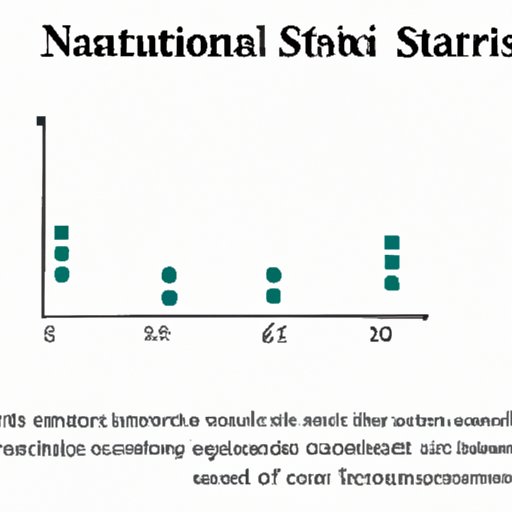I. Introduction
In statistical analysis, n refers to the sample size or number of observations in a dataset. Understanding the role of n in data analysis is vital to ensure the representativeness and accuracy of the results. In this article, we will explore what is n in statistics and its importance in data collection, sampling techniques, descriptive and inferential statistics, and statistical significance. This article is intended for anyone who wishes to improve their knowledge of statistics and data analysis.
II. Defining n in Statistics
n in statistics refers to the number of observations or data points in a sample. The sample size is critical in a statistical analysis as it affects the accuracy and reliability of the results. Generally, the larger the sample size, the more representative it is of the population being studied.
It is crucial to determine the sample size appropriately to ensure that the results obtained are accurate and not biased. Factors such as heterogeneity, variability, and the desired level of precision influence the determination of n in statistical analysis.
III. The Role of n in Statistics
Sampling techniques are an essential element of statistical analysis. However, they can be challenging to implement correctly. The role of n in sampling is to ensure that the sample is representative of the population being studied. The number of observations in the sample determines the accuracy or representativeness of the sample.
n plays a critical role in determining data representativeness, which is essential in statistical analysis. The sample should be selected in such a way that it represents the population as a whole. It ensures that the results obtained from the sample can be extended to the population being studied.
There are different sampling techniques such as random, stratified, cluster, and systematic sampling. The role of n in each method varies. In random sampling, n determines the accuracy of the sample, whereas, in stratified sampling, n determines the accuracy of the sample within each stratum.
IV. The Impact of n in Descriptive Statistics
Descriptive statistics involves summarizing and describing data. The sample size plays a crucial role in determining the representativeness of the data and the level of precision in data analysis. It is essential to choose an appropriate sample size for descriptive statistics to minimize sampling error.
The sample size influences data interpretation in descriptive analysis. A larger sample size provides more information about the data than a smaller sample size. With a larger sample size, the estimates are more precise and reliable. Conversely, with a smaller sample size, the estimates are less precise and reliable.
For instance, in a survey conducted to determine the mean income, a smaller sample size will not provide an accurate representation of the entire population. The smaller sample size may give an inflated or deflated mean income.
V. n in Inferential Statistics
Inferential statistics involves making generalizations from a sample to a population. n plays a significant role in inferential statistics as it determines the accuracy of the results obtained. A larger sample size reduces sampling error and increases the accuracy of the result.
n is essential in hypothesis testing, which is a fundamental component of inferential statistics. The sample size influences the power of the test, which refers to the ability of the test to detect a significant difference between the sample and the population. With a larger sample size, the test has a higher power to identify a statistically significant difference between the sample and the population.
Confidence intervals are another critical element of inferential statistics. The role of n in calculating the error in confidence intervals is significant. A larger sample size reduces the error in the confidence interval, whereas a smaller sample size increases the error.
VI. The Statistical Significance of n
n is significant in statistical analysis as it influences the statistical significance of the results obtained. Statistical significance refers to the confidence level at which we accept or reject the null hypothesis. The relationship between n and the confidence level is significant.
A smaller sample size reduces the statistical significance of the results obtained. Conversely, a larger sample size increases the statistical significance of the results obtained. For instance, in a study to determine the effect of a drug, a smaller sample size may indicate no significant effect due to the lack of power of the test, while a larger sample size may indicate a significant effect of the drug.
VII. Conclusion
n is a crucial aspect of statistical analysis and influences the accuracy and reliability of the results obtained. It is vital to consider the appropriate sample size for each analysis to ensure that the results obtained are representative of the population being studied. The role of n in sampling techniques, descriptive and inferential statistics, and statistical significance cannot be ignored. For further reading or study on the topic, interested individuals can consult statistical textbooks or attend online courses.
